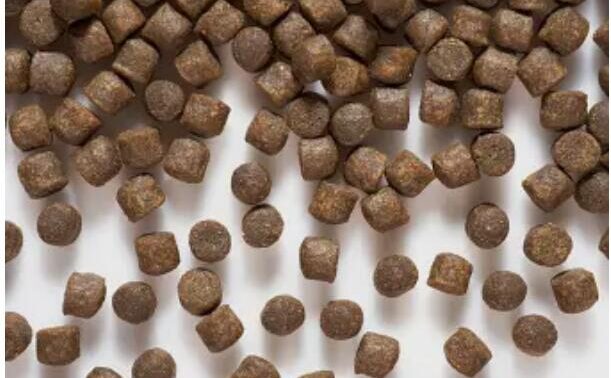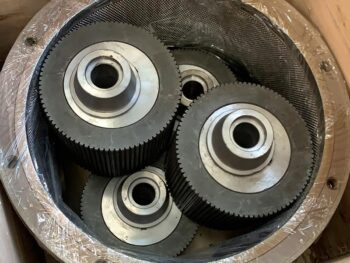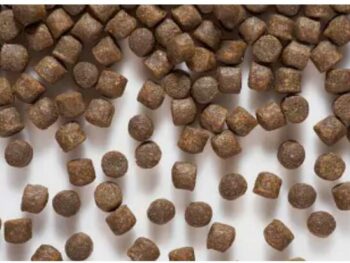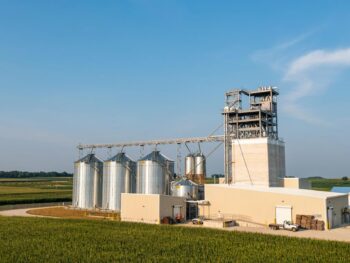1. Reception of bulk raw materials If they are transported by bulk trucks or trains, the raw materials are unloaded to the unloading pit after being weighed by a dump truck.
2. Receiving of packaging materials: divided into manual handling and mechanical receiving.
3. Receiving of liquid raw materials: bottled and poked can be directly transported into the warehouse manually.
(3) Storage of raw materials
There are many states of raw materials and materials in the feed, and various forms of silos must be used. There are two types of silos in feed factories: silos and room-type silos. Main raw materials such as corn, high grain and other grain raw materials have good fluidity and are not easy to agglomerate, and are mostly stored in silos, while auxiliary materials such as bran, soybean meal and other powdery raw materials have poor scattering properties and are easy to agglomerate after a period of storage The output is stored in a room-type warehouse.
(4) Cleaning of raw materials
Impurities in feed raw materials not only affect the quality of feed products but also directly affect the feed processing equipment and personal safety. In severe cases, the entire equipment may be damaged and affect the smooth progress of feed production, so they should be removed in time. The cleaning equipment in the feed factory is mainly screening and magnetic separation equipment. The screening equipment removes large and long debris such as stones, mud, and sacks in the raw materials, and the magnetic separation equipment mainly removes iron impurities.
(5) Crushing of raw materials
The technological process of feed crushing is determined according to the required particle size, the variety of feed and other conditions. According to the times of raw material crushing, it can be divided into primary crushing process, circular crushing process or secondary crushing process. According to the combination form with the batching process, it can be divided into the batching first and then the crushing process and the first crushing and then the batching process.
1. One-time crushing process: It is the simplest, most commonly used, and most primitive crushing process. Whether it is a single raw material or a mixed raw material, it can be crushed once. According to the number of pulverizers used, it can be divided into single-machine crushing and side-by-side crushing. Crushing, small-scale feed processing plants mostly use single-machine crushing, and medium-sized feed processing plants use two or more pulverizers in parallel. The disadvantages are uneven particle size and high power consumption.
2. There are three kinds of process forms in the secondary crushing process, namely single cycle crushing process, stage crushing process and tissue crushing process. (1) The single-cycle secondary crushing process uses a pulverizer to pulverize the material and then sieves it, and then returns the sieved material to the original pulverizer for re-crushing. (2) Stage secondary crushing process The basic setting of this process is to use two pulverizers with different sieves, and each of the two pulverizers is equipped with a grading sieve. The material goes directly to the mixer, the sieved material enters the first pulverizer, and the pulverized material enters the grading sieve for sieving. Materials that meet the particle size requirements enter the mixer, and the rest of the sieve enters the second pulverizer for crushing, and then enters the mixer after crushing. (3) Combined secondary crushing process This process uses different types of pulverizers in the two pulverizations. The first time uses a pair of roller pulverizers. Enter the hammer mill for the second crushing.
3. Batching first and then crushing process According to the design of the feed formula, the ingredients are first batched and mixed, and then enter the pulverizer for crushing.
4. Crushing first and then batching process In this process, the powder to be crushed is firstly put into the batching bin, and then the batching and mixing are carried out.
(6) Ingredients process
At present, the commonly used technological processes include manual batching, volumetric batching, batching with one warehouse and one scale, batching with multiple warehouses and several scales, batching with multiple warehouses and one scale, etc.
1. Manually adding ingredients Manually controlled adding ingredients is used in small-scale feed processing plants and feed processing workshops. This batching process is to manually weigh the various components that participate in the batching, and then manually pour the weighed materials into the Into the mixer, because all manual measurement, manual ingredients, very simple process, less investment in equipment, lower product costs, flexible and accurate measurement, but the manual operating environment is poor, labor-intensive, and labor productivity is very low, especially the operation After workers work for a long time, they are prone to make mistakes.
2. Volumetric batching. A volumetric batching device is installed under each batching bin
3. One warehouse and one scale for ingredients
4. Multiple warehouses and one scale for ingredients
5. Multi-bin digital scale batching divides the measured materials into groups according to their physical characteristics or weighing range, and each group is equipped with a corresponding measuring device
(7) Mixing process
It can be divided into batch mixing and continuous mixing. Batch mixing is to mix various mixing components together according to the proportion of the formula, and send them to a “batch mixer” that works periodically for mixing in batches. This kind of mixing method is more convenient to change the formula, and there is less mutual mixing between each batch. It is a kind of mixing process commonly used at present. The opening and closing operations are frequent, so most of them adopt automatic program control. The continuous mixing process is to continuously measure various feed components at the same time, and mix them in proportion to form a stream containing various components. When this stream enters the continuous mixer, it is continuously mixed to form a uniform stream. Material flow, the advantage of this process is that it can be carried out continuously, and it is easy to connect with continuous operations such as crushing and granulation. It does not require frequent operations during production, but when changing the formula, the adjustment of the flow rate is troublesome and in continuous operation. There are more material residues in the conveying and continuous mixing equipment, so the problem of mutual mixing between two batches of feed is more serious.
(8) Granulation process
1. Conditioning: Conditioning is the most important link in the granulation process. The quality of tempering directly determines the quality of pellet feed. The purpose of conditioning is to condition the prepared dry powder into a powder feed with a certain amount of moisture and humidity, which is conducive to granulation. At present, feed factories in my country complete the conditioning process by adding steam.
2. Granulation:
(1) Ring die granulation: The homogeneously tempered material is removed by the security magnet first, and then is evenly distributed between the compaction and compression die, so that the material enters the extrusion area from the compaction area of the feeding area, and is pressed by the roller The clamps are inserted into the die hole and continuously extruded to form a columnar feed. With the rotation of the die, the cutter fixed outside the die is cut into granular feed.
(2) Flat die granulation The mixed material enters the granulation system, and the rotary distributor located on the upper part of the granulation system evenly spreads the material on the surface of the die, and then the material is pressed into the die hole by the rotating press and mixed from the The bottom is extruded, and the rod-shaped feed coming out of the die hole is cut into the required length by the cutting roller.
3. Cooling During the granulation process, due to the introduction of high-temperature, high-humidity steam and the extrusion of the material, a large amount of heat is generated, so that when the granulated feed just comes out of the granulator, the water content reaches 16%-18%, and the temperature reaches 75 ℃ -85 ℃. Under this condition, the pellet feed is easy to deform and break, and it will also cause sticking and mildew during storage. The moisture must be reduced to below 14%, and the temperature must be lowered to below 8 ℃ higher than the air temperature. Just need to cool down.
4. Crushing In order to save electricity, increase output and improve quality in the production process of the pellet machine, the material is often made into particles of a certain size first, and then crushed into qualified particles according to the particle size of the livestock and poultry feeding. product.
5. Screening: After the pellet feed is processed by the crushing process, some unqualified materials such as powder clots will be produced. Therefore, the crushed pellet feed needs to be screened into products with neat particles and uniform sizes.




